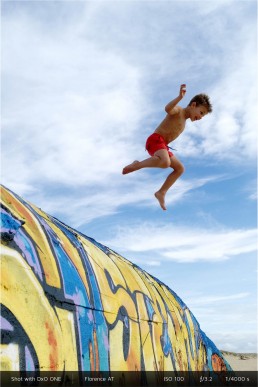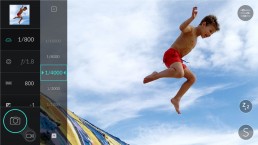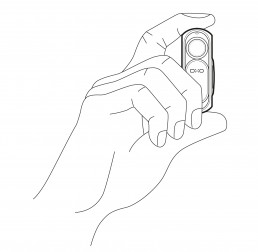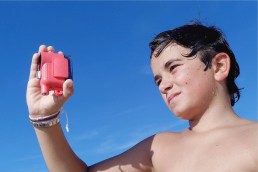Photographing children Speed
When choosing the right settings options for your DxO ONE, anticipate whether the child will be moving or not, and take into account the lighting conditions.
Parents love taking photos of their children and never get tired of capturing natural, spontaneous moments. These photos aren’t always the most successful since it can be difficult to capture a child’s fast and unpredictable movements!
The Sport scene mode is perfect if the child is moving, as it automatically switches to continuous autofocus mode (AF-C). This mode continues to focus on the subject as he or she moves, and the shutter speed is set to a short exposure time, which freezes motion in place.
Portrait scene mode is best when the child is not moving. It creates a shallow depth of field to better showcase the child. When you’re focusing, make sure that the child’s eyes are sharp./p>
If there’s enough light, use shutter priority mode (S mode) and a fast shutter speed of around 1/250s to avoid any motion blur. Take lots of photos—children’s expressions change quickly. You’ll have several photos to sift through, but you’ll also have a better chance of capturing the perfect image.
(Photographer Florence AT)
A big advantage with the DxO ONE is that you can put it in your pocket and carry it with you wherever you go. You can use it in standalone mode instead of connecting it to your smartphone. Just use the framing assistant on the camera’s OLED screen to compose your image so you can be even more ready to capture those special moments. While the DxO ONE is easy to turn on and adjust, select the right mode ahead of time to be sure to never miss a photo opportunity. If you’ve selected the right settings in advance, your DxO ONE will store the mode in its memory and will be ready to use as soon as you turn it on.
Analyze the lighting conditions and avoid shooting in light that’s too harsh, especially when photographing very young children. If you can, always try to photograph in the shade using a soft, ambient light that’s filtered through leaves, or shoot at the end of the day (up until sunset).
Every moment is a great opportunity to take a photo of your children, whether you’re playing a game, celebrating a birthday party, walking through the park as a family, or traveling abroad. These snapshots of your lives together will last for a long time to come. Use a variety of angles and distances. To avoid taking a photo that distorts body proportions, get on the same level of your child by crouching down or by using the DxO ONE’s tilt feature.
(Photographer Florence AT)
Children are not easy models, as their patience is limited. A posed session should be fun to keep their attention. Try a quick game, such as “Simon Says,” to encourage them to stop moving when you press the shutter button. Bring accessories, disguises, or balloons to help them forget your presence and act naturally.
Feel free to lend your DxO ONE to your child, although we recommend fitting it with the Outdoor Shell a protective, impact-resistant case, to make sure it doesn’t accidentally break. Using DxO ONE is a great way to introduce children to photography, help them express their creativity, and share in an adult activity with you. The DxO ONE is easy to hold and handle. Children can quickly learn how to use the camera as well as to understand the basics regarding framing and distance. Their images are often stunning because kids photograph their surroundings with a highly intuitive approach and at a different height than adults.
(Photographer Florence AT)
The DxO ONE’s high-quality files are ideal for printing out photos of your children.







 Download page
Download page